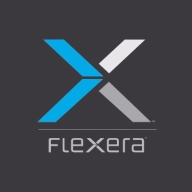


IBM Spectrum Computing and Flexera Cloud Management Platform compete in cloud and computing management. IBM Spectrum has strengths in data processing and job scheduling, while Flexera excels in advanced cloud management for complex environments.
Features: IBM Spectrum Computing offers high-performance computing, efficient job scheduling, and robust data processing capabilities. Flexera CMP provides comprehensive cloud cost management, governance tools, and multi-cloud orchestration for optimizing cloud resources.
Room for Improvement: IBM Spectrum Computing could enhance ease of deployment, simplify setup processes, and expand support for diverse applications. Flexera CMP might improve initial setup assistance, provide more customizable options, and reduce the learning curve for new users.
Ease of Deployment and Customer Service: Flexera CMP enables seamless cloud-based deployment with integrated customer support, facilitating rapid integration. In contrast, IBM Spectrum Computing involves more complex setups tailored for high-performance needs, potentially affecting deployment speed.
Pricing and ROI: IBM Spectrum Computing presents an attractive initial cost with significant ROI in dedicated settings. Flexera CMP's pricing, reflecting its rich features, suggests a higher initial investment but promises long-term returns through advanced cloud optimization.


IBM Turbonomic offers automation, planning, and right-sizing recommendations to streamline resource management, improve efficiencies, and optimize costs across virtualized environments and cloud platforms.
IBM Turbonomic is valued for its capability to optimize resource allocation and monitor virtual environments efficiently. It facilitates automated decision-making in VM sizing, load balancing, and cost optimization for both on-premises and cloud deployments. Users can leverage insights for workload placement, ensure peak performance assurance, and effectively right-size across VMware and Azure. The ongoing transition to HTML5 aims to improve visual and navigational ease, while expanded reporting features are anticipated. Opportunities for improved training, documentation, and integrations enhance platform usability and functionality.
What Are the Key Features?In finance, IBM Turbonomic aids in maintaining platform efficiency during market fluctuations. Healthcare organizations leverage its capability for resource optimization during high-demand periods to enhance patient care support. Retailers use it for planning in peak seasons, ensuring resources align with fluctuating demand to maintain performance continuity.
Flexera Cloud Management Platform (CMP) optimizes cloud costs and resources while efficiently managing multi-cloud environments. Its features for monitoring and governance aid in compliance. Valued for integration capabilities and automation tools, Flexera CMP streamlines cloud operations.
Flexera Cloud Management Platform (CMP) excels in multi-cloud management, cost optimization, and automation. Users appreciate its detailed analytics and reporting features that effectively track usage and costs. The platform's flexibility in integrating with different cloud environments allows seamless operations across various services, while its governance and policy enforcement are significant strengths. However, some users note the need for better integration with additional cloud providers, a high installation complexity, and that the support documentation lacks depth. Reporting features could be more comprehensive, and scalability issues exist in larger environments. Frequent updates can sometimes disrupt ongoing activities.
What are the Key Features of Flexera CMP?Flexera Cloud Management Platform is utilized across numerous industries, including finance, healthcare, and technology, to manage multi-cloud setups. Financial institutions leverage its cost optimization features to streamline expenses. Healthcare providers use its governance tools to ensure strict compliance with regulations. Technology companies benefit from its automation capabilities, allowing them to focus on innovation while Flexera CMP handles cloud infrastructure tasks.
IBM Spectrum Computing uses intelligent workload and policy-driven resource management to optimize resources across the data center, on premises and in the cloud. Now up to 150X faster and scalable to over 160,000 cores, IBM provides you with the latest advances in software-defined infrastructure to help you unleash the power of your distributed mission-critical high performance computing (HPC), analytics and big data applications as well as a new generation open source frameworks such as Hadoop and Spark.
We monitor all Cloud Management reviews to prevent fraudulent reviews and keep review quality high. We do not post reviews by company employees or direct competitors. We validate each review for authenticity via cross-reference with LinkedIn, and personal follow-up with the reviewer when necessary.